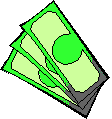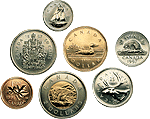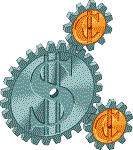Identify coins/bills up to
a) ten dollars
b) one hundred dollars

Research project
Discussion
Circle of Knowledge
Compare and Contrast
Individual Assessment
Observation Checklist Written Assignment
Oral Assessment
CEL's: COM, N, CCT
Learning Objectives
Strategies:
|
Assessment:
|
Activities
a) How much money does Alexander have left over at the end of the story:
b) Explain how they arrived at their answer.
a) What is mental math? (Mental math is learning to calculate in your head without
using pencil and paper.)
b) How students used mental math to figure out their answer.
Lesson Extension
Learning Objectives
|
 |
Strategies
|
Assessment
|
Activities
Learning Objectives
|
 |
Strategies
|
Assessment
|
Activities
a) 5 pennies = ? (1 nickel)
b) 2 nickels = ? (1 dime)
c) 2 dimes + 1 nickel = ? (quarter)
d) 4 quarters = ? (loonie)
e) 2 loonies = ? (toonie)
f) 20 dollars + 3 toonies + 2 quarters = ? ($23.50)
g) questions should increase in difficulty as you progress.
Learning Objectives
|
 |
Strategies
|
Assessments
|
Activities
Learning Objectives
|
 |
| Strategies Problem Solving |
Assessments
|
Activities
Extension Activities
Note: This lesson will take 2-3 periods.
Learning Objectives
|
 |
Strategies
|
Assessments
|
Activities